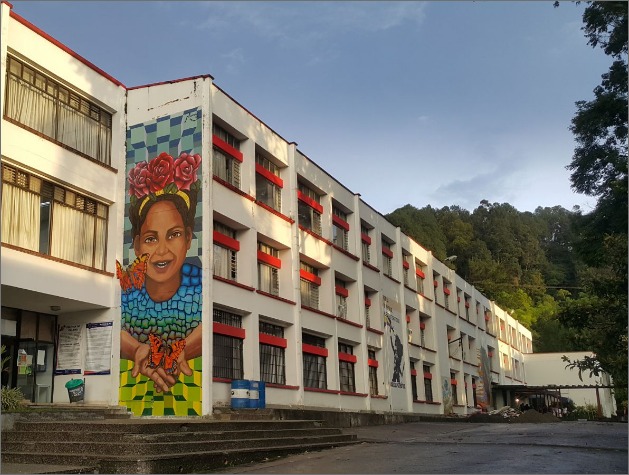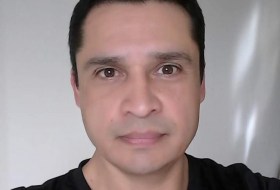News
A praise of inactivity
By: Javier Orlando Muñoz Bastidas, Professor of the Department of Philosophy
The South Korean philosopher Byung-Chul Han presents something very important: “Inactivity is not the opposite of activity. Activity, rather, draws nourishment from inactivity” (2023, p. 16). This assertion stands against the current performance-driven society, which promotes constant activity, entrepreneurship, and innovation as life ideals. Being busy, in today’s world, is a sign of distinction, so much so that not being busy generates a profound sense of guilt. To offer “an eulogy to inactivity” might sound offensive to the hyper-busy individual. But what the philosopher affirms is that inactivity is not the contrary of activity; instead, it nourishes, enhances, and elevates it. True activity is rooted in a profound state of inner stillness.
What is needed, then, is to distinguish between two kinds of activity: performance-based activity and power-based activity. The former opposes inactivity; the latter is nourished by it. Performance activity drives individuals to overexert themselves to meet the standards of beauty, happiness, and success imposed by the reigning economic system. This leads to deep physical and psychological exhaustion that results in anxiety and depression. Why? Because when these standards are not met, individuals experience a sense of guilt over their own perceived impotence. This is why power-based activity entails halting the rhythm of everything established, and beginning to design a new process at unsuspected rhythms.

Provided photo
The fundamental point lies not in the affirmation of power-based activity, but in its foundation upon inactivity. To put it clearly: learning to do nothing is what makes true creative activity possible.
In inactivity, there is a creative principle, because it takes us into a “zone of indeterminacy that enables us to produce something that has never existed before” (2023, p. 16). Inactivity is, in reality, a state of deep intensity through which the emergence of the new becomes accessible. For the new to be possible, a bit of renewing chaos is needed. Inactivity allows for an integral transformation of everything established.
But the most important aspect of inactivity is its capacity to heal. First, it must be said that excessive, self-imposed performance requires a constant anesthesia of the subject. There are two types of anesthesia: one that eliminates pain, and one that stimulates. The former avoids the feeling of guilt in the face of failure as a global system of domination; the latter seeks to overcome physical and psychological fatigue through the constant stimulation generated by “positivity.” People anesthetize themselves with drugs, painkillers, and stimulants, but also with positive speeches or “self-help” messages (so-called, even if they don’t truly help). This is precisely what inactivity should cure.

Provided photo
What is “primordial healing”? Han describes it this way: “When the little sister sees that her brother is in pain, she finds a path beyond all knowledge—she caresses him, wanting to touch him where it hurts. In doing so, the little Samaritan becomes the first healer. Within her operates, unconsciously, a knowledge of a primordial efficacy that directs her impulse to her hand and leads the hand to an effective touch. For this is what the little brother experiences: the hand does him good. Between him and the pain comes the feeling of ‘being touched’ by his sister’s hand, and the pain retreats before this new sensation” (2021, p. 47). Inactivity consists of encountering the other, in order to create an affective and existential bond. In haste, in speed, in busyness—this encounter is not possible. When the other pauses to provide warmth, and when we pause to embrace the other, that is when true healing begins.
Inactivity breaks the economic logic of production. It is not about producing, but about creating. The one who does nothing is hostile to production, because they reject life as mere survival and affirm it instead as contemplative life—a life in which one understands the fundamental unity of all that exists. The meaning of life cannot lie in production and consumption. The meaning of life lies in contemplating with wonder the infinite expression of existence, from which a creation of the self may become possible. Life must be the exaltation of existence as a celebration: “The celebration is the expression of an overflowing life, of an intense form of living. In the celebration, life turns in on itself, instead of pursuing goals external to it. The celebration suspends action” (2023, p. 61). A higher life is not possible through performance, but through the excess of celebration. One must pause in order to create and to smile.
But inactivity also entails a “fundamental rage” (2017), which means learning to say: Enough! Subjects today are not even objects anymore, because in the contemporary world they are below technological objects. It cannot be that the capacity to create oneself is annulled in a kind of digital autism, in which each person is trapped inside their own insignificant world. Fundamental rage consists in destroying everything, so that everything can become possible again. There are higher, unthinkable intensities yet to be created.
References:
Han, B. (2017). The Burnout Society. Herder Editorial.
Han, B. (2021). The Palliative Society. Herder Editorial.
Han, B. (2023). Contemplative Life. Taurus Editorial.
Written by: Javier Orlando Muñoz Bastidas Professor, Department of Philosophy


